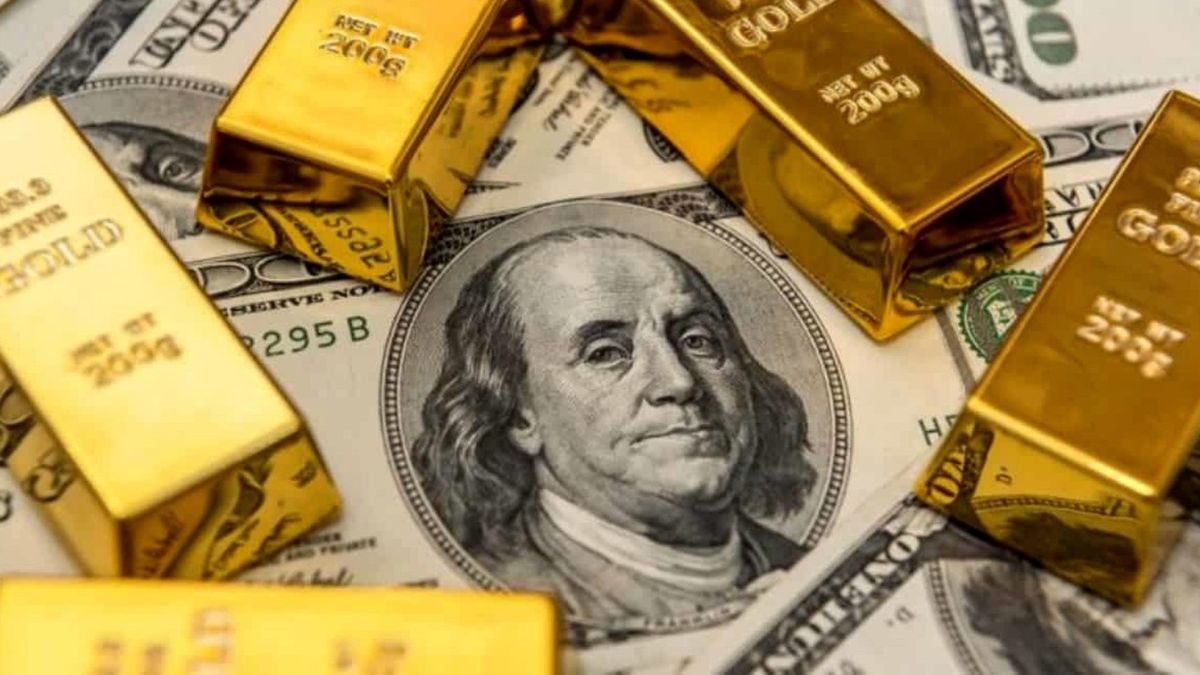Gold in exchange for dollars. That is what the central banks of many countries are doing in the search for less dependence on the United States, according to one of the latest articles from the BBC. The World Gold Council, which represents the precious metal industry, reported that last year central banks added to their reserves the most gold since 1950, when the records began. And this year’s data suggests that this trend is still alive.
To name a few, the central banks of large economies such as China, India or Brazil, among others, are buying gold to replace the dollars in their reserves at the fastest rate recorded since the postwar period.
Some analysts place the start of this trend even before the invasion of Ukraine, but most point to it as one of the triggers for the ease with which the United States imposed sanctions on Russia when the conflict started.
“Western nations froze some of the remaining assets due to the 2022 invasion of Ukraine, which incentivized central banks around the world to further increase holdings of fungible gold,” explain Bank of America’s global commodity analysts.
Learn more – Follow the price of the blue, official, CCL and MEP dollar in Argentina
1. Frozen reserves
For them, the global economy seems to be moving towards a multipolar world and they cite as data the US currency drop in official foreign exchange reserves from around 70% two decades ago to 58% today.
“Russia, now the most sanctioned country in the world, is a good example, since it is among the largest de-dollarizers and buyers of gold in recent years,” they add.
This reaction is rational. The United States was able to freeze Russia’s $300 billion reserves because they were in dollars.
“After the US sanctions after the war in Ukraine, countries have tried to reduce its exposure to potential sanctions in the future. This prompted a currency buildup in both gold and Chinese renminbi,” says Omar Rachedi, Adjunct Professor in the Department of Economics, Finance and Accounting at ESADE.
As has been seen, private companies that trade with Russia are also potentially vulnerableyes to US sanctions. Since the beginning of the year, gold has shown stellar performance. So far this year, the precious metal is up more than 10% in dollar terms.
2. Political statement
“We hope that central bank purchases remain robust in an increasingly multi-polar world, but we don’t expect last year’s record-breaking run to continue,” Menke wrote in a market report.
“We do not share the view of de-dollarization, although we consider that the purchase of gold by central banks is mainly a policy statement against the US dollar“, said.
Central banks like gold because it is expected to hold its value in turbulent times and, unlike currencies and bonds, does not depend on any issuer or government. Gold also allows central banks to diversify away from assets like US Treasuries and the dollar.
“The reasons why central banks are hoarding gold vary, but probably the main one is that need to diversify their reserve assets“, Professor Lawrence H. White, from the Department of Economics at George Mason University, tells BBC Mundo.
“China, for example, has been buying gold and, at the same time, selling part of its large portfolio of US Treasury bonds. Holding gold instead of dollar assets is also a way to reduce exposure to the risk of dollar depreciation,” he says.
But “the dollar remains the dominant currency for international payments, and neither the euro nor the yuan are likely to take its place,” White believes.
3. Diversification against interest rates
The rise in interest rates has also influenced many economies to move away from the dollar. “Central banks’ diversification needs are further exacerbated by the fact that their holdings of heUS Treasury bills have lost value due to the increases in interest rates carried out by the Federal Reserve of that country”, says Rachedi.
Thus, the shift to assets other than US currency – and especially US Treasury bills – has been a factor in It has also boosted diversificationexplains the ESADE professor.
For any economy of Latin America whose debt is in dollarsthe rise in rates has also been a setback.
4. Overwhelming hegemony
For Professor Rachedi, the main challenge for the global dominance of the US dollar may come from the Chinese renminbi, since China has begun to close oil contracts with Gulf countries at prices in renminbi and not in dollars.
In addition, the massive effort of the Belt and Road Initiative comes with the disbursement of contracts between China and countries in Asia, Africa and South Americawhose price is in renminbi and not in dollars.
“However, as long as China does not provide a well-protected environment for investors and make it possible for the government to directly control financial markets and possibly seize any financial accounts, the Chinese challenge to US dominance would not be as important.”
“As long as the United States manages to maintain free financial markets with a stable rate of inflation, its dominance is here to stay. over the next decade or so“, he predicts.
Source: Ambito
I am a 24-year-old writer and journalist who has been working in the news industry for the past two years. I write primarily about market news, so if you’re looking for insights into what’s going on in the stock market or economic indicators, you’ve come to the right place. I also dabble in writing articles on lifestyle trends and pop culture news.




